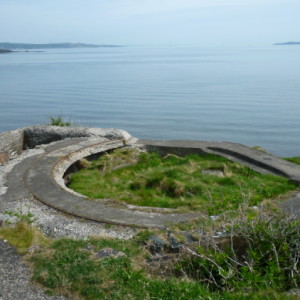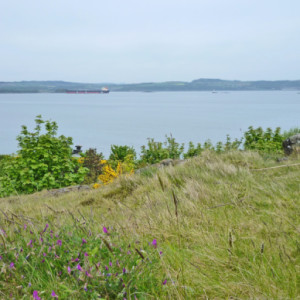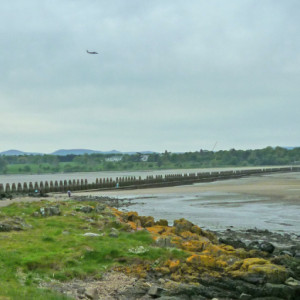Just to the west of Edinburgh lies Cramond Island which can be visited on a causeway for two hours before and after low tide. It was a very important location during the war as, with other nearby islands and headlands, it was used to protect Britain from invasion. Huge submarine booms had been placed across the Forth to protect Rosyth Dockyard and other important ports so further defences were necessary to prevent enemy craft sneaking through the channel between the island and Cramond. A barrier with its line of triangular concrete posts was built with vertical grooves in their sides into which were slotted reinforced concrete panel to make a solid wall, a few of which still survive. Panels completed the barrier and each pillar had a ring on the top to locate a wire. The causeway, which would be under about two metres of water at high tide, was used to transport vital equipment to the island for all the personnel manning the observation posts and guns. There are still many remains of the wartime buildings including a couple of gun emplacements (extra)
Today apart hearing birds it seemed very peaceful with the sounds only of the occasional plane coming in to land at Edinburgh and the muffled sound (extra) of the Iwateson crude oil tanker with its three attendant tugs going to Hound Point Terminal. (The booms stretched right across the water from near Braefoot in Fife to the island of Inchmickery on the right to Cramond Island) Seventy years ago there would have been barrage balloons just to the west and dozens of naval ships in view.
Tidetables are displayed with the only safe times to cross, yet thirteen people and three dogs had to be rescued by lifeboat on three separate occasions late last month as they were cut off by the tide.



Comments
Sign in or get an account to comment.


